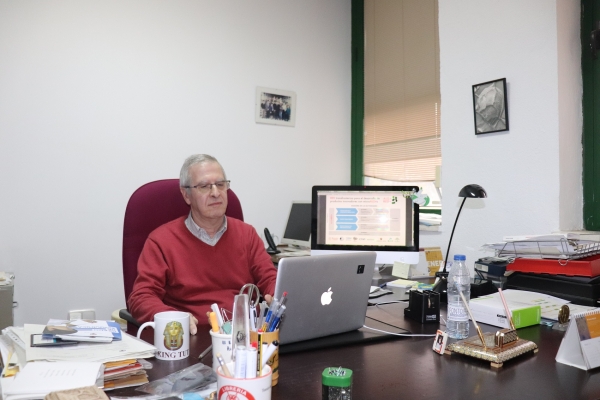Photosynthesis is one of the most important biochemical processes on the planet. In fact, all living beings depend to some extent on this mechanism. Life on earth is based, precisely, on this process carried out by plants, algae and bacteria by which they convert water and carbon dioxide into organic molecules using the sunlight's energy. But, what happens when the light energy absorbed by an organism is so great that it exceeds the capacity of photosynthetic mechanisms? All excess, as in many other areas of life, is harmful. Sunlight is fundamental, but in its proper measure.
Under intense light conditions, plant cells degrade to the point that their own survival is threatened. It produces what in the scientific literature is known as "Reactive Oxygen Species": unstable and highly reactive molecules capable of altering proteins and characteristics important to the life of the organism.
Evolution, however, has allowed photosynthetic organisms to withstand this excess of radiation through a mechanism called Non-Photochemical Quenching: a system that these living beings trigger when they are exposed to too much solar energy, through which they modulate the capture of light. In this way, they protect the integrity of their cells and are able to survive.
In algae, it is known that certain proteins catalyse this process, but their function and regulation are little known to date. To better understand this system fundamental to the lives of photosynthetic organisms is the main objective of the UNREDE research project, an effort coordinated by the Emilio Fernández, Professor of Biochemistry and Molecular Biology at the University of Cordoba, and along with researcher Emanuel Sanz-Luque, who is completing a stay at the lab of the renowned Arthur Grossman at Stanford University (USA).
For this, the project has focused on Chlamydomonas Reinhardtii, a type of unicellular microalgae that grows in a couple of days, can be grown in a test tube, and is relatively easy to genetically modify, which is why it is used as a model organism in research.
Precisely, two specific proteins have been identified in this mechanism involved in the protection mechanism against excess sunlight. "Now, through the study and modification of these proteins, we can see how they are involved in the excess radiation quenching process," says researcher Emilio Fernández.
The project will conclude in 2021, so the main conclusions are to be reached over the next two years. The results, however, could provide important information on how photosynthetic organisms will behave in the face of changes in temperature and atmospheric carbon dioxide levels. They could also have an impact on scientific strategies to improve the photosynthetic efficiency of plants and their tolerance to adverse conditions.
"To prevent plants from dying, we must know the mechanisms by to which they die," says researcher Emilio Fernández. The goal, therefore, is to help these organisms survive under the least favourable conditions that may occur in the future; such as, for example, carbon dioxide increase, situations of high salinity, or the absence of nutrients.


